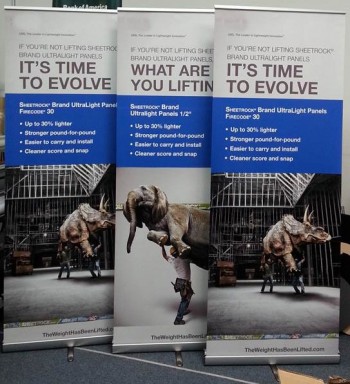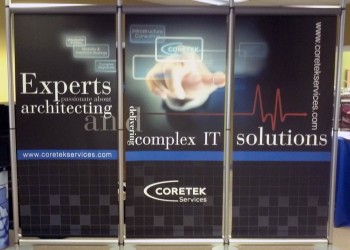
There are certain volumes for poster printing where digital inkjet printing simply can’t compete with offset or screen printing. However, those volume numbers, and the margin where such projects are profitable, inch higher for digital printing companies as time goes by.
 Bruce Ulrich, president of Productive Displays in Addison, Ill., reports that with the addition of LexJet Sunset Photo Satin SUV 275g, that volume number where his company can compete for poster jobs with offset and screen printing is near 1,000.
Bruce Ulrich, president of Productive Displays in Addison, Ill., reports that with the addition of LexJet Sunset Photo Satin SUV 275g, that volume number where his company can compete for poster jobs with offset and screen printing is near 1,000.
“Typically, where we compete most effectively for this type of work is in the 1-800 piece range. Once we go over 1,000 pieces I would need another 20-30 percent off the cost,” says Ulrich. “We used another product in the past, but it was much more expensive. I needed to find an option that would give us at least another 40-50 percent off the cost of producing posters.”
Ulrich found that option with LexJet with Sunset Photo Satin SUV 275g. Moreover, Productive Displays is able to provide a higher-quality, sharper and more color-accurate poster. Sunset Photo Satin SUV is also instant-dry, so that production of multiple-run posters can move quickly and smoothly using the company’s Mimaki JV3 solvent printers.
 The job pictured here for Dish Network is an excellent example as it required three versions with 100 prints of each version. Variable-data print projects, where there are multiple versions of the same print, continues to become more commonplace, fitting nicely into a wide-format digital print company’s wheelhouse.
The job pictured here for Dish Network is an excellent example as it required three versions with 100 prints of each version. Variable-data print projects, where there are multiple versions of the same print, continues to become more commonplace, fitting nicely into a wide-format digital print company’s wheelhouse.
“With most customers, they’ll come back and ask me for the price for three versions, five versions or ten versions. When they say that to the offset or screen print companies there’s a setup charge. I try to explain to them that where our favorable cost situation comes into play is that it doesn’t matter how many versions they want, the price per poster won’t change,” explains Ulrich. “The client was very pleased with the look and quality of the posters. The Sunset product will allow us to compete more cost-effectively against the offset and screen print companies for poster-related projects.”


